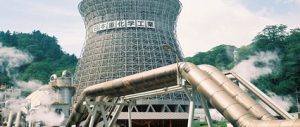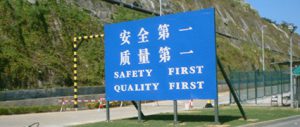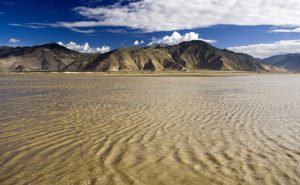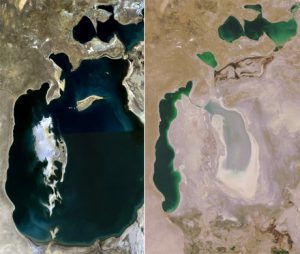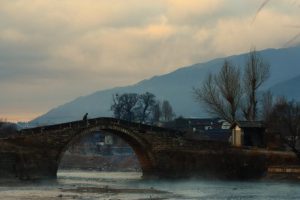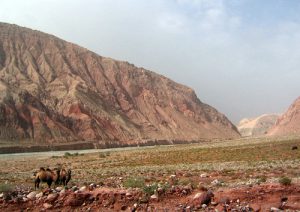A radioactive leak may prove to be the swan song for one of California’s ageing nuclear-power plants, the San Onofre Nuclear Generating Station, also known by the rather innocuous acronym SONGS. Located in northern San Diego county, and normally able to supply 2.1 million homes with electricity, the pressurised water reactor has been switched off since January 31, when one of its generators leaked what the plant’s operator, Southern California Edison, called “an insignificant or extremely small release” of radioactive steam into the atmosphere. This week, the plant announced plans to lay off a third of its workforce.
The idea of scrapping this nuclear-power plant because of equipment failure is gaining support, particularly after the Nuclear Regulatory Commission ruled in early August to stop issuing any new licenses or renewals to US nuclear-power plants until the environmental impact of storing radioactive waste is addressed.
With no long-term storage solution for spent nuclear fuel, America’s 104 atomic power plants must resort to stowing it on site, either triple-stacked in dry casks or dumped into pools which need constant circulation to stave off nuclear meltdown. Allison Macfarlane, a geologist who now chairs the NRC, also wants to re-evaluate the vulnerability of these nuclear facilities to mega-earthquakes before the commission approves any more.
No wonder the eight million Californians who live within a 50-mile radius of the San Onofre reactor are feeling jittery. The Nuclear Regulatory Commission has cited “serious design flaws” in the plant’s massive new generator units, caused by an error of computer modelling which resulted in triple the flow rate of liquids.
Fukushima links
Mitsubishi Heavy Industries, which has been closely involved with recovery efforts at the Fukushima reactors that failed during the 2011 tsunami in Japan, had retrofitted the steam generators at San Onofre at a cost of US$671 million (4.3 billion yuan). Bechtel engineers finished installing them last year. But Mitsubishi’s paltry US$137 million (872 million yuan) warranty will not even begin to cover full replacement costs.
Edison might be able to recover some of their losses through insurance. But estimates for repairing or replacing the two units are expected to be dismayingly high for a cash-strapped state with frequent earthquakes, and utility rate-payers are demanding that they not be stuck with the bill. The chief executive of Edison International, Ted Craver, told investors recently that it’s not certain whether the plant at San Onofre will ever be able to operate at full capacity unless the steam generators that malfunctioned are replaced. The licence is good for another decade. In the meantime, supplementary electricity is supplied from a hastily rehabilitated gas-fired plant up the coast.
The revamped generators at San Onofre had been designated as replacement parts and thus were exempt from the more rigorous inspections required for brand new equipment. Excessive vibrations in these newly refurbished units caused some tubes to wear out prematurely; so far, some 1,317 of 39,000 tubes have been plugged. Any split in these narrow tubes may have resulted in radioactive coolant mixing with steam and escaping from the containment domes to an adjacent building, according to NRC spokesman Victor Dricks. Inadequate support for the heavy equipment during its trans-Pacific shipment from the manufacturer in Japan to San Onofre may also have contributed to the malfunction.
Mitsubishi has built 24 Pressurized Water Reactor plants in Japan, where scientists recently linked a strain of mutant butterflies to the radiation leaks triggered by the tsunami and a Japanese study revealed that 3,281 people living in the vicinity tested positive for cesium radiation – although at levels considered safe. The company also provides essential components for nuclear reactors used in about 30 other countries, including China.
“The top priority of Mitsubishi is the safe and reliable operation of all the plants and components we design, engineer, supply and support,” said Patrick Boyle, a spokesman for Mitsubishi Nuclear Energy Systems. “At the time these steam generators were designed, this type of tube wear had not been experienced at other PWRs. For the past four decades, we have used the latest technology and designs to help improve nuclear energy facilities in Japan, the United States and the rest of the world. Steam generators are an important part of safely and efficiently generating electricity at nuclear energy facilities. We will continue to work closely with our customer, Southern California Edison, to conduct a thorough investigation into this issue. We are confident the lessons learned will help the industry maintain and improve its impressive safety record.”
Finding a solution to the glitches at San Onofre is a challenge and with the nuclear power industry’s reputation still recovering from the tragedy in Fukushima, there’s a lot at stake. A landmark carbon-cap and trade law requiring one-third of California’s power supply to come from alternative energy sources by the year 2020, will come into force at the start of next year. In addition to parts for “green” nuclear power plants, Mitsubishi also manufactures wind turbines and emissions control equipment, crucial for the new Californian power grid sourced from wind, solar, wave and bio-fuels.
Nuclear shutdown?
Meanwhile, four neighbouring cities in southern California – Irvine, San Clemente, Solano Beach and Laguna Beach – have complained to authorities about the potential public safety risks and excessive costs of this newly controversial nuclear-power plant. Irvine wants to shut it down forever. But after so many years, why all the fuss?
Since the 1970s, the facility at San Onofre has sprawled on the Pacific coast, its pale twin domes looming like a sunbather’s breasts over a popular nude beach, a state park and a renowned surfers’ break. Camp Pendleton, a military base, is located next door and the late Richard Nixon’s erstwhile Western White House is just up the road.
In smog-ridden California, atomic power was long hyped as green, reliable, and comparatively emissions free. Pacific Gas & Electric, a utilities company, once blithely proposed an elaborate necklace of atomic power plants: one every 25 miles down the California coastline, with an extra one bobbing offshore. But opposition from environmentalists mounted as confidence in the technology lagged. In 1977, Bechtel engineers installed the original 420-tonne nuclear vessel backwards at San Onofre, and occasional blunders have continued since. In fact, San Onofre has one of the worst safety records of any American nuclear power plant. The federal watchdog NRC has substantiated 62 complaints here since 2008.
Anti-nuclear groups consider the commissioners to be more lapdog than watchdog and frequently blame the NRC for lowering safety standards in order to keep the old power plants running. California senator Barbara Boxer warned the federal commissioners: “If the NRC does not do its job, the American people will demand the ultimate protection – the shutdown of old nuclear power plants.”
Daniel Hirsch, a lecturer in nuclear policy at the University of California Santa Cruz, takes a rather more cynical view. “The reactor’s steam generators were supposed to last 40 years but conked out in just 25. The likeliest scenario at San Onofre is that Edison will propose a restart [of Unit 2] within a few weeks and the NRC will acquiesce, due to economic and political incentives,” he told chinadialogue.
“With nuclear power, we have a technology that began in secrecy, and the culture of non-transparency has ossified,” Hirsch pointed out. “Right now, presidents appoint the NRC members and senators vet them. The result is that, in effect, the commissioners work for the politicians.”
Decisions taken to avoid financial catastrophe might backfire with dire environmental consequences. Edison’s suggestion to run their nuclear generators at San Onofre below their capacity as a way to check potential leaks drew Hirsch’s scorn. “That’s equivalent to finding out a car has deficient brakes and the driver decides to drive at 40 miles-per-hour and just hope for the best.”
Jan McGirk is a former correspondent for The Independent (London) who has reported on environmental issues and disasters in Asia, Latin America and the Middle East.
This article is published here as part of Nuclear Enery and Developement Programme, which is supported by the Heinrich-Boell Foundation.
Homepage image by NRCgov
